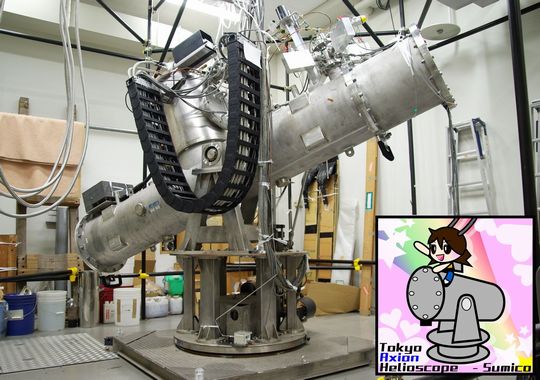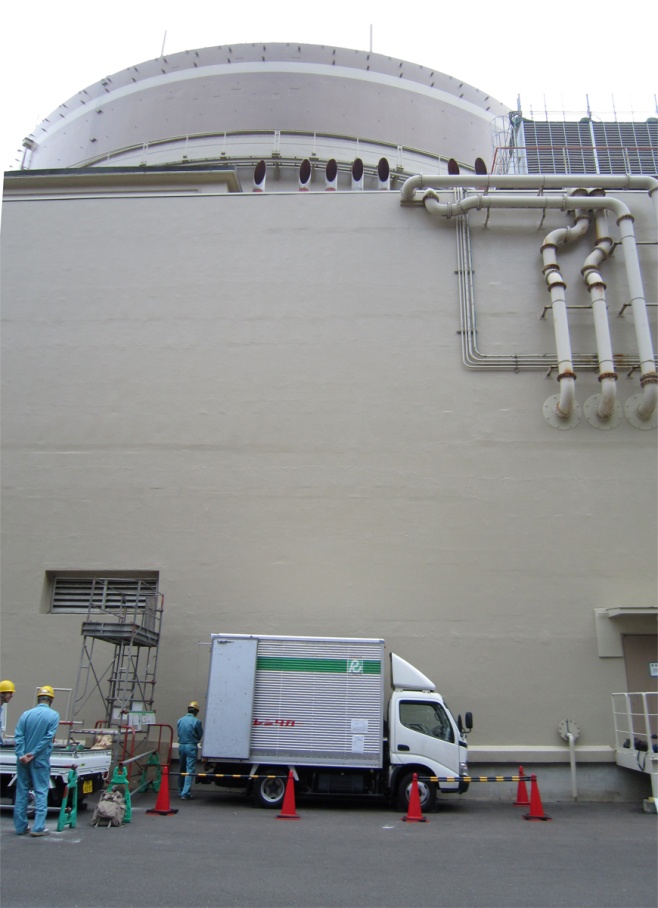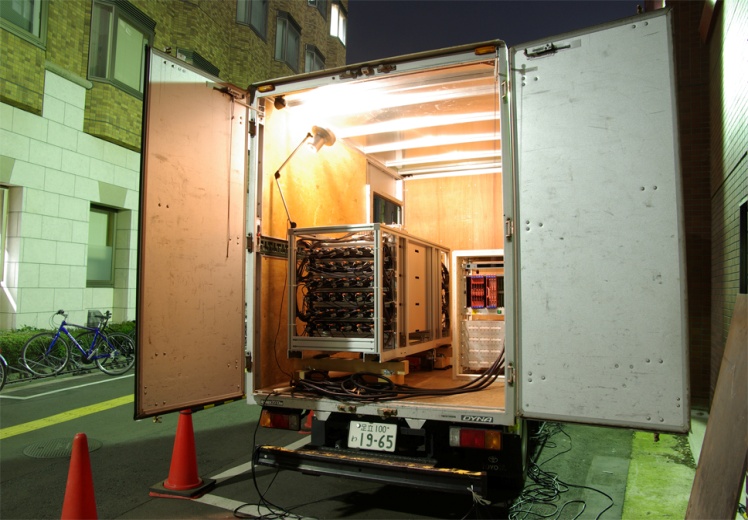Solar axion and hidden photon search with Sumico
We are running an experiment to search for axions, light neutral pseudoscalar particles yet to be discovered. Its existence is implied to solve the so-called strong CP problem. The axion would be produced in the solar core through the Primakoff effect. It can be converted back to an x-ray in a strong magnetic field in the laboratory by the inverse process. We search for such x-rays coming from the direction of the sun with the TOKYO AXION HELIOSCOPE, also known as Sumico. It was the world's first dedicated axion helioscope with a tracking mechanism.
Another experiment is being performed using a dedicated detector piggybacked on Sumico to search for hidden sector photons kinetically mixing with the ordinary photons. The detector consists of a cylindrical vacuum chamber with a photon sensor in it. The existence of the hidden sector photons and other hidden sector particles is predicted by extensions of the standard model, notably the ones based on string theory. It would be produced in the solar core or in the space by oscillation of the ordinary photon, and can transmute into the photon again in a long vacuum chamber in the laboratory.

Mobile anti-electron neutrino detector
We built a compact mobile anti-electron neutrino detector to be used at a nuclear reactor station, for the purpose of monitoring the power and plutonium content of the nuclear fuel. It can be used for the reactor safeguard program of the International Atomic Energy Agency(IAEA). It is a segmented antineutrino detector made of plastic scintillators called PANDA, Plastic Anti-Neutrino Detector Array.
A small prototype was deployed for two months at Ohi Power Station of KEPCO in Fukui, Japan. It was installed on a van, transported to the site, and held in the van outside of the reactor building during the measurement. We could observe the difference in neutrino-like event rate before and after the shutdown of the reactor. This is the world's first aboveground antineutrino detection of a nuclear reactor.
With its mobility and compactness, PANDA could be used to verify the existense of sterile neutrinos with a short oscillation length. The existing cosmological data indicate that the energy density of the Universe may contain dark radiation composed of one or two sterile neutrinos, which have been invoked for the explanation of short-baseline reactor antineutrino anomalies as well as the gallium and LSND/MiniBooNE anomalies.






